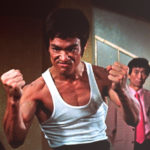 Music
Music  Music
Music  History
History 10 Less Than Jolly Events That Occurred on December 25
 Weird Stuff
Weird Stuff 10 Funny Ways That Researchers Overthink Christmas
 Politics
Politics 10 Political Scandals That Sent Crowds Into the Streets
 Weird Stuff
Weird Stuff Ten Bizarre Facts About The Doge Meme
 Our World
Our World 10 Ways Your Christmas Tree Is More Lit Than You Think
 Movies and TV
Movies and TV The 10 Coolest Stars to Set Sail on The Love Boat
 History
History 10 Things You Didn’t Know About the American National Anthem
 Technology
Technology Top 10 Everyday Tech Buzzwords That Hide a Darker Past
 Humans
Humans 10 Everyday Human Behaviors That Are Actually Survival Instincts
 Music
Music 10 Surprising Origin Stories of Your Favorite Holiday Songs
 History
History 10 Less Than Jolly Events That Occurred on December 25
 Weird Stuff
Weird Stuff 10 Funny Ways That Researchers Overthink Christmas
Who's Behind Listverse?

Jamie Frater
Head Editor
Jamie founded Listverse due to an insatiable desire to share fascinating, obscure, and bizarre facts. He has been a guest speaker on numerous national radio and television stations and is a five time published author.
More About Us Politics
Politics 10 Political Scandals That Sent Crowds Into the Streets
 Weird Stuff
Weird Stuff Ten Bizarre Facts About The Doge Meme
 Our World
Our World 10 Ways Your Christmas Tree Is More Lit Than You Think
 Movies and TV
Movies and TV The 10 Coolest Stars to Set Sail on The Love Boat
 History
History 10 Things You Didn’t Know About the American National Anthem
 Technology
Technology Top 10 Everyday Tech Buzzwords That Hide a Darker Past
 Humans
Humans 10 Everyday Human Behaviors That Are Actually Survival Instincts
10 Origin Stories Behind Iconic Old-School Horror Movie Villains
Long before M3GAN did her creepy little dance, Chucky unleashed a never-before-experienced fear of dolls. (Okay, M3GAN is not exactly a doll, but you get the idea.) Nearly twenty years before Netflix introduced the Scream TV series, the original Ghostface made us double-check that our doors were locked at night.
There is a reason why old-school horror movie villains are still so popular. The actors behind these monsters tapped into our most primal fears by fully embodying the role, scaring us half to death in the process. Think about how Scream turned an everyday cinema into a house of horrors or how Halloween made innocuous pumpkins seem the most sinister thing ever.
Freddy Krueger crawled into our nightmares, while Jason Voorhees traumatized us like no other movie character could. Except for Michael Myers, that is. Not to mention Leatherface and his ever-present chainsaw. But what are the stories behind these villains? What inspired the most terrifying, bloodthirsty fictional killers that, in turn, served as the spark behind today’s up-and-coming horror villains?
Related: 10 Horror Films Where You Never See the Villain
10 Samara Morgan
How long did it take you to stop looking at your TV askance after watching 2002’s The Ring? “First you watch it, then you die!” That sentence alone sent chills down the spines of thousands of eager horror movie fans. The Ring is one of the horror movie genre’s best classics and is based on a horror novel of the same name. The American version of the movie is a remake of the 1998 Japanese film Ringu and claims to be based on true events. These events are said to have happened during the 16th century in Japan.
A girl named Okiku worked in the Himeij Castle in Japan and was pursued by a samurai, but kept refusing him. To manipulate the situation in his favor, the samurai hid a valuable plate that Okiku was meant to protect. When Okiku realized the plate was gone, she panicked because it meant she would be put to death.
The samurai again suggested that she should give in to his advances because he could save her. She refused, angering the samurai, so he suspended her over a deep well. When she said no again after the samurai asked her one last time to be with him, he struck Okiku with his sword, and she tumbled down the well to her death.
It wasn’t the end of Okiku, however. The samurai heard her counting the plates over and over again from the bottom of the well, never reaching number 10. The creepy thing is that there is a well called Okiku’s Well in Japan. The well has a cover over it to keep Okiku from crawling out.[1]
9 Norman Bates
When Robert Bloch dreamed up the character of Norman Bates for his 1959 horror novel Psycho, he probably never imagined that his book would become so popular that its contents would be turned into several movies. Norman Bates also made a turn on TV in the series Bates Motel.
In Bloch’s subsequent novels, Bates is not the main villain. He is succeeded by more than one copycat killer who assumes Bates’s identity after his death. This is in contrast to the Universal Studios movie franchise. Psycho was adapted to film because of the shocking revelations surrounding murderer Ed Gein at the time. This led to a widespread assumption that Gein inspired the Norman Bates character.
However, Bloch revealed that it was not Gein so much as the horrific circumstances surrounding the killer’s case that inspired Normal Bates. He wanted to highlight that killers could hide their true nature even in small towns amid the most curious window-peeping neighbors.
It was only many years later, when the world was appalled at learning the full extent of Gein’s crimes, that Bloch realized how closely Bates resembled Gein in their heinous acts. And, of course, there are also the weird attachments both men had to their mothers.[2]
8 Candyman
Horrifying legends that come to life are what make many old-school horrors so good. In the movie Candyman (1992), an unforgettable legend was “born” after a Black artist was summarily lynched when it was discovered he had an affair with a white woman. A student writes a thesis about urban legends and folklore in Chicago and happens upon the legend of the Candyman.
The legend turns into a nightmare when the Candyman’s name is said five times in front of a mirror, and he starts killing people with a rusty hook for a hand. Not to mention the ribcage and mouth full of bees. Tony Todd played the titular character so well that it is hard to picture him without the hook and the bees. And the movie took some of its inspiration from a blood-chilling real-life murder.
On April 22, 1987, Ruthie Mae McCoy called 911 in a panic. Ruthie suffered from mental illness and told the dispatcher, “They throwed the cabinet down.” This confused the dispatcher, but Ruthie was right. There were passages between the apartments in the building where Ruthie lived. These passages were meant to make maintenance work easier. But, it also made it a breeze for burglars to push bathroom cabinets out of the wall to enter an apartment.
A neighbor alerted the police after they heard gunshots coming from Ruthie’s apartment that night. However, the police did not break down the door when no one responded to their knocks and calls. They did not want to be sued for destruction of property. It took two days for Ruthie’s body to be discovered as a result. A building superintendent drilled the lock to her apartment open and found her face-down on the floor. She had been shot four times.
In the Candyman movie, the first victim is Ruthie Jean, who is murdered by someone who came through her bathroom mirror. Ruthie Jean’s neighbor is Ann Marie McCoy, who believed Ruthie was crazy. Ruthie died alone after calling the police for help. It is not quite clear how Ruthie McCoy’s murder became part of the movie. It is thought that the director may have heard about the crime after deciding to shoot Candyman in Chicago.
The movie was also based on a short story, “The Forbidden,” written by Clive Barker.[3]
7 Leatherface
The earliest versions of Leatherface were a bit comical (at least they are now). The face-wearing killer holding the chainsaw over his head and running down the stairs is not nearly as scary as it was back in the day. (The new movies are still terrifying, though.)
Not surprisingly, some elements of the Leatherface character were inspired by Ed Gein. Director Tobe Hooper had heard stories about the Wisconsin murderer but claimed he did not know it was Gein until the 1974 The Texas Chainsaw Massacre was released.
Gein’s fondness for wearing human skin as a mask greatly disturbed Hooper, so he decided to make it part of Leatherface’s character. Additional inspiration came from Hooper’s memory of a Halloween party where a friend arrived wearing a cadaver’s face. Hooper would later state that it was the most disturbing thing he had ever witnessed.
Hooper also used Baby Huey as inspiration for Leatherface’s bumbling walk and child-like behavior. As for the chainsaw, this came from a fleeting thought Hooper had about mowing down a large crowd in the hardware section of an exceptionally busy store.[4]
6 Jason Voorhees
Jason Voorhees is that guy in a hockey mask who can knock someone’s head clean off their body with one punch. This is both hilarious and strangely terrifying. Friday the 13th is a true horror classic and a Halloween movie marathon favorite. The franchise has twelve films and an upcoming limited series called Crystal Lake, a prequel to the first movie released in 1980.
It is widely believed that a horrifying incident in Finland was the main inspiration behind the Friday the 13th movies. Although the production team denied that the movies or Voorhees are based on specific real-life events, the similarities between fiction and reality are too striking. You be the judge…
In 1960, four teenagers set off on a camping trip in Lake Bodom. The two boys and two girls set up their tents along the lake’s edge. A group of birdwatchers saw the tents collapse on June 5 and a blond man running in the opposite direction. They did not investigate, so it was only later that a carpenter discovered what had become a crime scene. Three of the teenagers had been stabbed to death, and the fourth was barely alive. Nils Gustafsson had suffered several stab wounds and fractures to his face.
He told the police that someone broke into the tents and attacked them. He also said that the man who attacked was dressed in all black and had bright red eyes. Gustafsson was initially considered a suspect but was cleared because the severity of his injuries matched the story he told the police. The Lake Bodom murders remain unsolved in 2024.
The Friday the 13th movies went on to potentially inspire serial killer Peter Moore to kill four male victims over three months back in 1995. Moore blamed the murders on a fictitious restaurant worker named Jason, who his lawyer and the prosecution had no doubt was supposed to be based on Jason Voorhees. Moore was a cinema owner in North Wales before he turned serial killer.[5]
5 Hannibal Lecter
Hannibal Lecter is an even more terrifying horror movie character than Voorhees. The 1981 novel Red Dragon was adapted for the big screen and resulted in the widely praised The Silence of the Lambs, released in 1991.
Anthony Hopkins’s performance made the film, and his sociopathic demeanor throughout still manages to spook, even if you watch the movie for the tenth time. Many of Lecter’s characteristics are the result of the novel writer and movie director’s wild imagination. Just the name Hannibal (a play on cannibal) immediately evokes an image no one wants to picture. But, some of the inspiration for this diabolical character came from a horrifying real-life case.
Thomas Harris, the author of Red Dragon, worked as a journalist in the 1960s. He interviewed a convicted and imprisoned killer, Dykes Askew Simmons, in Mexico. It was at this prison that he met “Dr. Salazar.” At first, Harris thought Salazar was a prison doctor. Salazar asked Harris incredibly insightful questions, and Harris was struck by how poised the man was. However, when Harris later asked a prison warden about Salazar, he learned the horrible truth.
Salazar was actually an incarcerated former surgeon named Alfredo Balli Trevino!
Trevino came out as gay during a time when Mexico actively oppressed the gay community. He tried his best to fit into mainstream society, but this upset his lover to a great extent. Trevino ended up killing his lover over what was believed to be Trevino’s intention to marry a woman. Trevino sliced up the corpse into small pieces and stacked them into a box. Obviously, he did not get away with the crime. But, his sentence was commuted after he had served 20 years in prison, and he returned to his hometown of Monterrey.
Trevino went on to treat patients without worrying too much about payment until he died in 2008. It is believed that Trevino had also murdered several hitchhikers between 1950 and 1970, but this was never proven. Harris used Trevino’s mannerisms as inspiration for his Hannibal Lecter character. Both men were doctors at one point. Both had a deep insight into the criminal mind. Both were intellectually challenging to others. And both men easily conned others.
Trevino was also not Harris’s only inspiration. Other murderous individuals who helped bring Lecter to life include Albert Fish, Pietro Pacciani, and Robert John Maudsley.
Pacciani, who was known as the Monster of Florence, murdered several people in Florence in the 1970s. These murders directly inspired The Silence of the Lambs sequel Hannibal. Maudsley killed child molesters and continued his murder spree while in prison. He was finally confined to a bulletproof glass cell, which inspired Lecter’s cell in the film.[6]
4 Pennywise
Stephen King’s 1986 horror novel IT sets quite the opening scene. You can picture six-year-old Georgie Denbrough in his yellow slicker and red galoshes running down Witcham Street, chasing the paper boat his older brother Bill made for him. In this tense opening scene, readers are introduced to what would become one of horror’s most terrifying villains: Pennywise the Dancing Clown.
King thought out most of Pennywise’s characteristics (no surprise there). But the evil clown character was also inspired by a bunch of real-life clowns. Many believe King’s idea for IT came from serial killer John Wayne Gacy, who used to dress up as a clown called Pogo. However, King named Bozo, Clarabelle (from Howdy Doody), and Ronald McDonald as his inspirations for writing his controversial novel. King had a run-in with the Ronald McDonald mascot on a plane back when travelers were still allowed to smoke onboard.
King asked the mascot where he came from, to which the clown replied, “From McDonald Land.” King naturally thought the clown was being sarcastic and asked him where he really came from. The clown then confirmed that there was such a place as McDonald Land in Chicago, and he was there for the opening of a new McDonalds restaurant.
King found this to be a surreal and unnerving moment, but it also gave him more ideas for the Pennywise character.[7]
3 Ghostface
When Scream was released in 1996, it introduced a whole new meta approach to horror. The movie clearly made fun of horror movie tropes while still paying tribute to the classics that came before it. Kevin Williamson, of Dawson’s Creek fame, wrote the Scream screenplay after watching a TV special about Florida serial killer Danny Rolling. Rolling, or the Gainesville Ripper, murdered five students in four days in August 1990.
Gainesville was in a state of terror and remained so even after Rolling was caught. While Williamson watched the events unfold via reenactment on his TV screen, he noticed an open window in his house. He was immediately terrified as he realized how easy it would be for a killer to get into his house. This overwhelming fear inspired him to create Ghostface.
The similarities between the killer in Scream and Rolling are highlighted in the movie. In real life, Rolling insisted he never had a motive for killing the students. But there had to be some reason for his murder spree. In Scream, Billy Loomis is revealed as the killer behind the ghastly mask, and he tells Sidney that not every killer needs a motive. However, Loomis did have a motive in that Sidney’s mother had an affair with his father, resulting in his mother leaving.
Scream seemingly also inspired a so-called “thrill killing” in 2006. Sixteen-year-old Cassie Jo Stoddart was murdered by two classmates, Torey Adamcik and Brian Draper. The boys stalked Stoddart and filmed her before stabbing her to death. They made a video in which they talked about how they would kill Cassie. The same video contained footage of the boys’ reaction after they killed her.
Draper and Adamcik apparently wanted to become notorious serial killers. They even had a death list of other people they wanted to murder. When they were caught, they mentioned Scream, as well as the Columbine High School shooters, as their inspiration for Cassie’s murder.[8]
2 Michael Myers
Michael Myers is often described as pure evil. Considering that he was six years old when he killed his first victim (his sister), that description is apt. Throughout the film franchise, Myers continues to murder people left and right. And he does this without so much as a grunt.
Myers is the embodiment of a nightmare that you cannot escape. If he finds and stalks you at a gas station, chances are he’ll rip your teeth out. Or, if you get out of your car to confront him next to the road, he’ll probably stomp your head to a pulp. Sure, these are all movie scenes and not real life, but the Halloween movies still have the power to make you check behind you when you walk to the bathroom at night.
The Myers character was inspired by a very real and frightening event experienced by Halloween director John Carpenter when he was a student at Western Kentucky University.
Carpenter met a teenage patient during a visit to a psychiatric hospital. The boy’s unnerving “evil” stare greatly unsettled Carpenter, and he later used this experience to describe Michael Myers’s emotionless face when he was six. The character of Sam Loomis describes Myers’s eyes as the “devil’s eyes.” Yul Brynner of Westworld fame inspired grown-up Myers’s inhuman strength throughout the Halloween movies. And, of course, Myers’s infamous mask was modeled from a mask of Star Trek’s Captain Kirk.[9]
1 Freddy Krueger
When you watch A Nightmare on Elm Street now, it is more of a comedy than a horror. Freddy Krueger’s exaggerated mannerisms and strangely long arms are not exactly scary in 2024. But, back in 1984, when Krueger’s scarred face popped up on the big screen, he scared the crap out of moviegoers.
Like the other movies on this list, A Nightmare on Elm Street was inspired by real-life events and experiences. Writer and director Wes Craven read about a family who had escaped the Killing Fields in Cambodia. The family made it to America, but before they could even sigh in proper relief, a young member of the family started having nightmares.
The young boy told his parents he was afraid to sleep because he believed the thing chasing him in his nightmares would get him. He tried to stay awake for several days at a time but inevitably fell asleep. That night, his parents heard screams emanating from their son’s bedroom. They rushed to him, but it was too late. Their son had died in the middle of his last nightmare.
This story formed the basis of Craven’s script, but he still needed to figure out his villain. Craven had several ideas for the villain, but one childhood memory ultimately brought Freddy to life. Craven remembered a man walking down the street past his house late one night. The man turned and looked at Craven, who was watching him with a disturbing expression on his face. The man also wore a fedora—another part of Craven’s childhood experiences that made it into the movie.[10]








